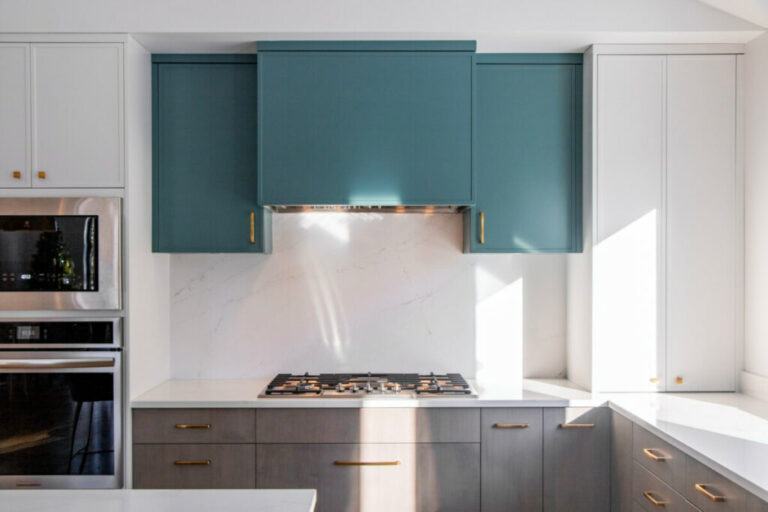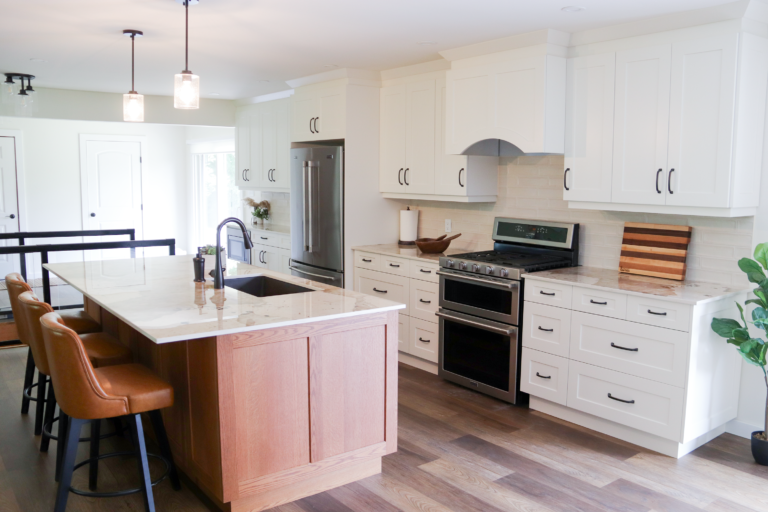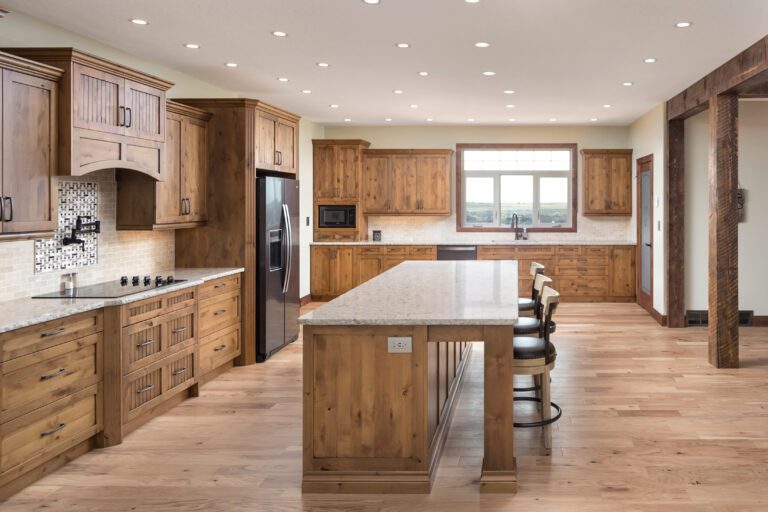At first, laminate countertops were used as tabletop surfaces in restaurants and cafés, then later took off in kitchens in the 1950s. It’s super popular today due to the price and number of patterns available.
The patterns give laminate the ability to mimic other materials at a cost-effective price. So you could have a marble-looking countertop for cheap. If your budget is tight, a laminate countertop is your best choice.
The downside is that it has seams, which don’t always look so good depending on the pattern. Seams can also be a source of water penetration, even more so if the installation isn’t done right.
What Are Laminate Countertops?
All laminate surfaces used for countertops have the same basic manufacturing process, though there are some small differences from one manufacturer to another.
The process starts with plastic phenolic resins that are laminated onto layers of brown kraft paper, then a decorative print layer is added, and on top of that comes a wear layer and a thin transparent, protective resin layer.
Modern high-pressure laminates are embedded with cellulose layers that solidify under heat and pressure. This gives the product a whole other level of strength and adds great scratch resistance. Here’s a video on the manufacturing process of countertops.
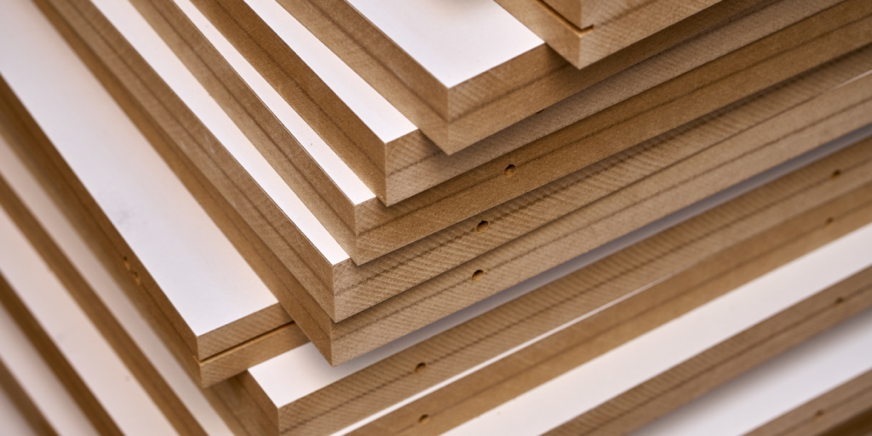
Let’s look at some of the pros and cons of laminate countertops.
Pros of Laminate Countertops
Budget-friendly
Laminate countertops are among the cheapest compared to any other type of countertop. This is great because you’ll have more money for the other things in your build, whether you’re building new or remodeling.
If your budget is super small, laminate is a perfect choice.
Ease of installation due to weight
Installing laminate countertops is relatively simple. A DIYer can most likely get away without hiring any experienced installers. Here’s a video on YouTube to help you install them in case you’re stuck.
If however, you’re not someone who can DIY the installation, hiring someone to install your laminate countertop will still cost much less than hiring someone to help with installing countertops of almost any other material.
Wide variety of colours, styles, textures, and patterns
Laminate is one of the most versatile materials in terms of design for countertops. They can mimic any other material out there like quartz, granite, marble, and so on.
Stain resistant
Laminate is a material that provides a non-porous surface that prevents dirt and moisture from penetrating the melamine beneath it. So it’s likely that stains won’t appear at all.
Maintenance free
Unlike marble or concrete countertops, laminate countertops don’t need to be resealed…ever! No special care is necessary to keep them protected and looking great.
All you need to clean and maintain them is some dish soap mixed with some water and a soft cloth. Spray the countertops, wipe them down, rinse your cloth with water, and go over them again to get all the soap off.
You don’t want any soap left on the counters when handling food so make sure you go over them as many times as you need.
Feel free to read our ultimate guide on how to clean kitchen cabinets and countertops in a way that doesn’t leave any damage.
Now that we’ve looked at some of the pros, let’s look at the downsides of laminate countertops to make sure you make an informed decision when you decide to remodel.
Cons of Laminate Countertops
Not as durable as most other materials
Laminate Countertops may be among the cheapest, and their durability reflects that price.
Though they can last a while if you’re careful, they don’t last as long as any of the other materials regarding regular wear and tear.
Another big downside is that moisture can penetrate the seams and cause delamination.
They’re also vulnerable to heat damage and can scratch easily. Speaking of heat damage…
Not heat resistant (possible delamination)
Laminate Countertops are not heat resistant. Heat can cause them to delaminate and form an uneven surface.
So, make sure to use heat pads at all times when placing a hot pot or pan, or even a hot coffee pot on the surface.

Photo from a forum on thriftyfun.com
Shorter lifespan
The lifespan of laminate countertops is the sum of their durability, cost, and everything else tied to them. Their lifespan is the shortest of all compared to any other countertop material.
Not repairable
Repairing laminate won’t work like some other materials where you might be able to just sand them down a bit and reseal the surface (wood, quartz, etc.).
Small scratches could be touched up with some designated resin paint, but with deep scratches, you run the risk of water seeping through.
Any repairs done will affect the look and function of the laminate and they’ll never be the same.
If moisture reaches the plywood or particleboard underneath it, the wood will most likely swell up or warp and the laminate could separate from the wood.
If the layers start to separate at the edges, the countertop will need to be replaced.

Photo from a forum on diy.stackexchange.com
Now, let’s get into how to maintain and care for a laminate countertop to prevent any of the situations we just mentioned.
Maintenance and Care of Laminate Countertops
As we mentioned before, laminate is a non-porous material that is quite easy to clean.
Start by using a mild soap and water mixture as a mild cleaner and a soft cloth. Spray the countertops and wipe them.
After they’re wiped the first time, rinse the cloth with warm water and go over them a second time, getting off the rest of the cleaner. Then take a dry cloth and dry the counter, not letting the moisture air dry to prevent it from seeping through the edges.
Here’s a step-by-step guide on cleaning laminate countertops.
Again, if moisture does seep through the seams, it could delaminate, which would require replacing the entire countertop.
Now that you know how to take care of a laminate countertop, let’s talk about design.
The Design Aspect of Laminate Countertops
When it comes to designing laminate countertops, your imagination is the only limiting factor.
They were once limited to basic faux stone and some woodgrain patterns, but now they’re available in hundreds of different colours, patterns, and textures.
New printing technology lets you do almost anything with design. If you combine a printed pattern with a certain texture, the countertop suddenly doesn’t look cheap anymore.
Laminate Countertop Installation
The installation of laminate countertops is also much easier than most other countertops due to their weight.
If you’re a moderate DIYer, then you could even do this yourself.
But as we mentioned before, even if you hire someone to install them, you’ll spend considerably less than you would when hiring someone to help with most other kitchen countertops.
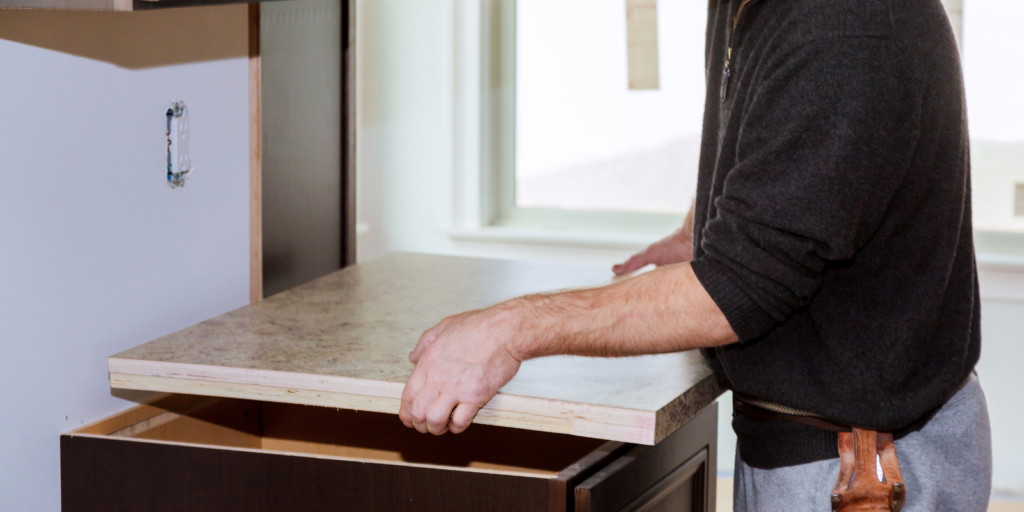
The Lifespan of Laminate Countertops
With regular use, wear, and tear, well-taken care of laminate countertops can last approximately 15 years. After that, they’ll most likely show serious wear and fading.
Heavy use or exposure to unusual moisture levels will rapidly shorten their lifespan.
Also, if you’re considering a countertop for an outdoor kitchen, laminate is out of the question. They’re not meant for outdoors at all due to the stronger fluctuations in moisture content and higher moisture levels.
Warping and delamination are imminent within a short period of time if they’re used outdoors. You’re better off getting resin, stone, or concrete countertops for an outdoor kitchen.
Top Brands
Final Thoughts
The first and strongest compelling reason to consider laminate kitchen countertops is the unmatched prices, they’re the “affordable alternative” to granite, quartz, marble, and so on.
Other pros include easy maintenance, and the huge variety of colours, styles, patterns and even texture options. And last but not least, bacteria resistance.
An ancient problem with laminate countertops has always been a lack of visual depth. Natural stones like granite or marble have a depth appearance. Even resin and quartz have that 3D quality, but laminate is a thin layer on the surface and the seams give the depth away.
So, the textures (which weren’t available until recent years) in laminate help achieve this 3D look that makes the laminate countertop look so much more like the material it’s mimicking.
And although laminate won’t stain from wine or oil spills because it’s a non-porous material, it can easily chip on the edges or burn. Yes, laminate doesn’t belong in high-end kitchens, but it’s great for shoppers with tight budgets, rental properties, house flips and often second kitchens.






